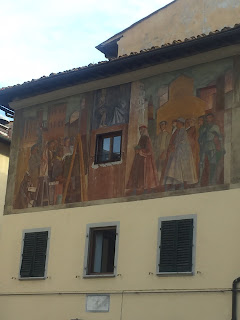A Monkey Off My Back (a capuchin maybe)
Ok, it´s not the whole gorilla, not a chimpanzee and probably not a rhesus monkey, but I got a small one off my back this morning. I sent the first chapter of my dissertation (four more to go) to my committee. I haven´t gotten feedback from them yet and I know when I do it won´t be, "This is perfect, you shouldn´t change a thing." Nevertheless, I feel pretty good about it. Overcoming the inertia of the blank page is the hardest part and I think I´m now in a groove of good systematic reading, digging and writing. The first chapter, which came out to 50 pages including 9 images and the bibliography, covers the reception of Don Quixote by Spanish speaking readers over the first 200 years of its existence.
Interesting things I found out were the following:
-A whole bunch of really smart people don´t entirely agree on exactly what makes Don Quixote the first novel. After all, there were already a whole bunch of books out (La Celestina, Lazarillo, Guzmán de Alfarache) that had plots, multiple voices and narrators, etc. The Quixote was different because of how Cervantes played with the concepts of reality and fiction and how we view and consider written works like history and scripture. You can still see the reality - fiction play in movies like Shutter Island and Inception. Cervantes started all that in 1604. One scholar said that what makes the Quixote the first novel was how it showed how one man built his personhood in the face of a modernity that threatened (and still threatens) to make us all anonymous cogs in a huge industrial machine. We become interested not just in what will happen to Don Quixote next, but we also get to see his interior development, which is still what separates a good novel from a crappy one.
-The Spanish publishing industry was a goat-rope when the first Quixote was published. There were hundreds and hundreds of early errors that were compounded by subsequent editions. You see, the Spanish Inquisition was very hard-core about the ideological content of books in the 1500-1700´s, going so far as to scoop up a bunch of French and Flemish print shop workers for Lutheranism because they possessed "heretical" material and burning them at the stake or sentencing them to years of service rowing in warships, which was just a long, slow death. They were very lax on basic systematic operation, though, and a lot of print shop workers were completely untrained. So that´s what religious extremism can do for the running of your national industries.
-We mostly think of Don Quixote through the images of him we´ve seen, but for the first 50 years of the book´s history it was not illustrated. Almost immediately after the non-illustrated editions were published, though, people were showing up dressed as Don Quixote at carnivals, parades and celebrations in Spain and Spanish America. They were replicating what they had read, not what they had seen in an image, which speaks to a basic human desire to view, create and interpret images. Cervantes tied a lot of the imagery in the book to the carnivalesque, which pushes our buttons because we like to invert social roles more than we realize. He also tied the imagery to the existing religious iconography, which in the Catholic parts of the world was really significant. How we react to images and what they represent - what they tie to in other parts of our brains and our own experiences is really fascinating.
Anyway, I´ve got a bunch of compositions and mid-term exams to grade, but I wanted to mark this point with a blog entry, to commemorate in a small way this milestone that makes me think that the whole dissertation by June is doable, even if I look like St. Jerome (see attached image) by the time I´m done.
Nothing to do but to do it.



